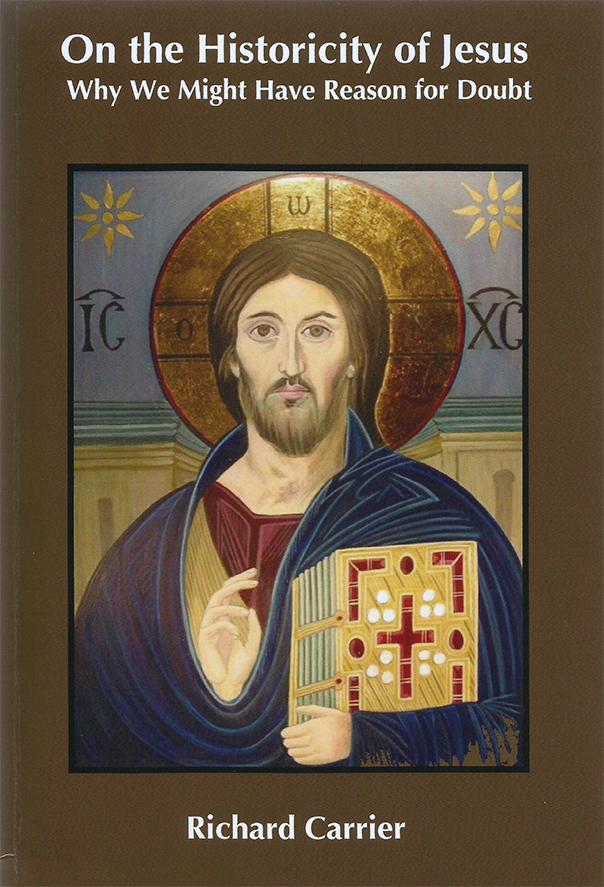Or:
How (((Luke))) transvalued an Aryan value
 But even if we accede to that hypothesis, it then only confirms the same point: that Luke is not writing history, but myth. He or his sources are simply making everything up. His tales are told for their meaning and rhetorical effect, not because they were researched or came from witnesses. I’ll close with one more example of this, the Emmaus narrative of Luke 24, a resurrection-appearance tale found in no other Gospel and thus distinctive of Luke’s style of invention.
But even if we accede to that hypothesis, it then only confirms the same point: that Luke is not writing history, but myth. He or his sources are simply making everything up. His tales are told for their meaning and rhetorical effect, not because they were researched or came from witnesses. I’ll close with one more example of this, the Emmaus narrative of Luke 24, a resurrection-appearance tale found in no other Gospel and thus distinctive of Luke’s style of invention.
Here Luke tells the story of a man named Cleopas (along with an unnamed friend) who journeys by road from Jerusalem to nearby Emmaus, after they learn the corpse of Jesus has vanished. On the way, the resurrected Jesus appears to them (albeit in disguise) and explains the secrets of the kingdom (which happens to be a spiritual kingdom, not a physical one), then vanishes, and Cleopas recognizes who he was and goes on to proclaim what he was told. Conveniently, the name Cleopas means ‘tell all’, in other words, ‘proclaim’. The story thus has several telltale markers of myth: a name invented or selected for its meaning to the tale rather than any historical truth; an absurdly ahistorical narrative (never heard of from any earlier source [Mark or Matthew – Ed.]) of a disguised divine visitor; an unrealistic conversation with a complete stranger; a miraculous vanishing; and an all-too-convenient rhetorical purpose for all of it. This is the Vanishing Hitchhiker legend—ancient Roman style.
As it happens, the founding myth of Rome, then famously known everywhere and celebrated in annual passion plays, is almost the exact same story: a man named Proculus (archaic Latin for ‘Proclaimer’ or ‘He Who Proclaims’, thus not only again a fictional name designed for the story but essentially the same name as Cleopas) journeys by road from nearby Alba Longa to Rome, after the Roman people learn the corpse of Romulus has vanished; and on the way, the resurrected Romulus appears to him (not in disguise but this time in glorious form) and explains the secrets of the kingdom (literally: how to conquer and rule the world), then ascends into heaven (as Luke eventually has Jesus do as well), and Proculus recognizes who he was and goes on to proclaim what he was told. I’ve already demonstrated the extent to which the Gospels have borrowed this Romulan resurrection tale for Jesus (see Chapter 4, §1, and Element 47). Mark had already fashioned his passion account in light of it, and Matthew embellished it even more in accord. So it is not unexpected that Luke would take the same model further.
And indeed he has. Not only in the ways I have already pointed out in previous chapters but also here, in the tale of Cleopas on the road to Emmaus. lf we accept the identification of Luke’s intended Emmaus as the Ammaus mentioned by Josephus as a town nearby Jerusalem, then in both Luke’s narrative and the Romulan tale the Proclaimers are journeying from a city on a mountain to a city in a valley, roughly the same direction (east to west, like the sun), and roughly the same distance (seven to twelve miles).
But the changes are the point. While Proculus receives his gospel on the road to Rome, Cleopas receives his gospel on the road from Jerusalem: so while the old story suggests ‘all roads lead to Rome’, the new story suggests all roads lead from Jerusalem. While Romulus appears in awesome glory, befitting the awesome glory of Rome’s dominion and the very visible empire he promises, Jesus appears in disguise, hidden, just as the kingdom he promises is hidden, and which, like Jesus, becomes visible (and thus knowable) only in the communion of believers. Luke has thus transvalued the Romans’ founding myth: unlike the Romans, their resurrected hero promises a hidden spiritual kingdom originating from Jerusalem on high. And just as the glorious visage of Romulus is what confirmed to Proculus that what he said was true, so it is the powerful word of the gospel that confirms to Cleopas that what Jesus said was true. Luke thus rewrites the story to communicate how Christian values differ from mainstream Roman values. This is a classic hallmark of mythmaking. [1]
______________
[1] Pages 480-482 of Carrier’s book. Italics in the original but bold-type added by Ed. For more on the Romulus parallels and reversals in the Emmaus narrative see Arnold Ehrhardt, ‘The Disciples of Emmaus’, New Testament Studies 10 (January 1964), pp. 182-201, and Francis Gerald Downing, ‘A Rival to Romulus’, in Doing Things with Words, pp. 133-51.
One reply on “Unhistorical Jesus, 7”
[…] https://westsdarkesthour.com/2019/10/22/unhistorical-jesus-7/ Thanks for flying with WordPress.com […]